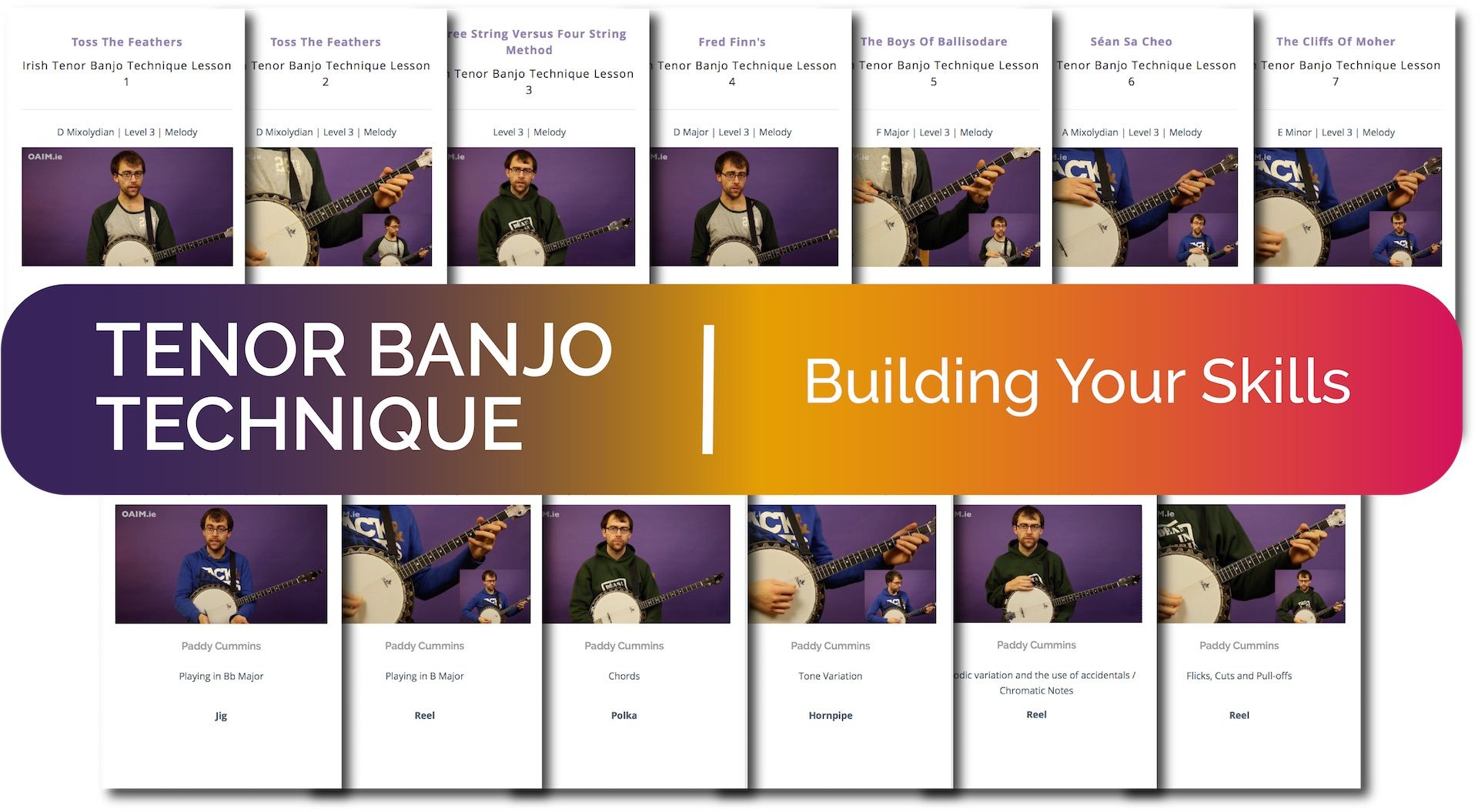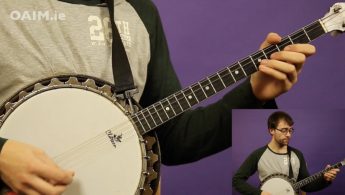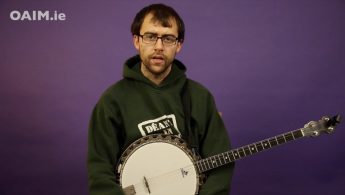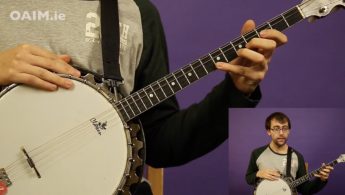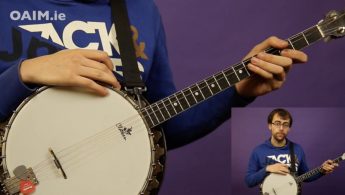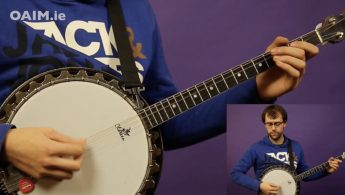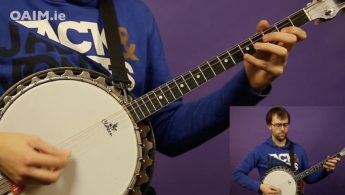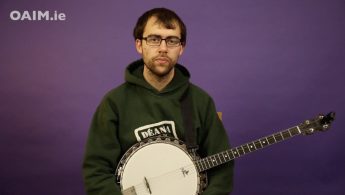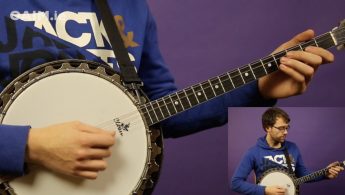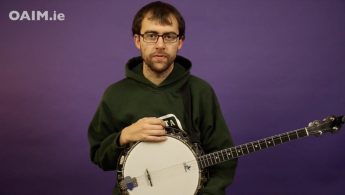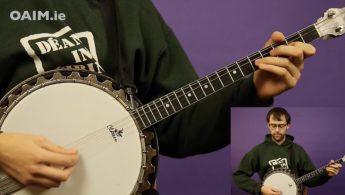- 13 lessons teaching how to play 11 very popular Irish tunes.
- Progress at your own pace, pause & repeat videos.
- Access on all your devices.
- PDF sheet music & mp3’s to download & keep for each tune.
- 14-day free trial. Cancel anytime
- Access to 14 instruments, 40+ courses, 700+ tutorials
Start Your Free Trial
BONUS:
- Access our Entire Course Catalogue for Every Instrument.
- Library of over 150 popular Irish tunes to practice along with.
- Virtual Reality Sessions for the unique Irish Pub Session experience – a real treat for the Irish music lover.
- Community Forum of students and teachers, all friends with a love of Irish music.
Irish Tenor Banjo Technique is for you if you have already mastered the basics of the instrument. If you are new to the banjo we recommend you begin by taking our
Banjo Basics course.
By the end of the course you will have a firm grasp of various Irish tenor banjo techniques and a new repertoire of twelve popular Irish dance tunes that fit well on the banjo. The course has 13 lessons, broken into 3 to 4 tutorials each, where tunes are taught phrase by phrase.
Course Structure
A wide array of banjo techniques are introduced in this course, including: triplets, slides, flicks, position playing, using chords, methods of creating tonal variation, melodic variation and bridging. As the lessons progress, the ornamentation and techniques taught progressively advance. Each new tune is used to demonstrate a new technique. Tunes selected in this course are well known session tunes on the Irish music scene.
Here are the popular Irish traditional tunes that are taught in this course:
Toss The Feathers
Fred Finn’s
The Boys Of Ballisodare
Séan Sa Cheo
The Cliffs Of Moher
Dave Collin’s Jig
Bunker Hill
Killavil Postman
The Galway Hornpipe
The Tempest
Killarney Boys Of Pleasure
Your Tutor
 Paddy Cummins
Paddy Cummins was born and reared in Drimnagh, Dublin and began experimenting with music at nine. His first instrument of choice was the mandolin, as played by his father, then the guitar, before eventually being saddled with a banjo aged fourteen. Paddy attended some brief tuition at Comhaltas branches in Monkstown but is largely self-taught and spent his teenage years completely dedicated to his music practice. He holds a first class honours degree in Irish Music and Dance from the University of Limerick and was mentored there by John Carty. He also received masterclass tuition from established players such as Enda Scahill, Kieran Hanrahan, Cathal Hayden, Angelina Carberry and Brian McGrath.
Read more.
Frequently Asked Questions answered by tutor Paddy Cummins
What Tenor Banjo do you recommend?
Although banjo-whizz Gerry O’Connor does use CGDA tuning, 99% of players use the common Irish tuning GDAE. This is an important thing to note when buying an instrument. In Ireland, the market demand is for these instruments so they are in strong supply but, elsewhere, this may not be the case and you may need to fit new strings and set new head tensions to suit the different setup. There are vintage banjos in healthy supply from the likes of Vega, Clifford Essex, Epiphone and Paramount. All are high quality banjos. If you want something more contemporary, Ireland has its fair share of makers such as Tom Cussen (Clareen Banjos), Dave Boyle and Emerald Banjos. Jim Patton (JP Banjos) in the UK has also been highly regarded. Entry level banjos can be bought from Gold Tone which are fairly good for beginners and improvers but better quality vintage instruments can be got within the same price range with some shopping around.
Can I play Irish music on the 5-string banjo?
This is a common question for our adept 5-string players and, unfortunately, the answer is no. If you are looking to sing songs and ballads then there is a place for the 5-string but for our instrumental melodies, the tenor banjo is what you require. Maybe in ten or twenty years this will change as currently, Paddy Kiernan of the band Nava is playing fantastic Irish music in the 5-string. But it’s only the beginning of something very new. If you were to assume that Don Reno-style, single-string playing would work for Irish music, I can tell you that the nature of this style is less fluid than is obtained from the use of pick.
Can I provide chordal accompaniment to tunes with the banjo?
Much like the mandolin, the tenor banjo does not have an accompaniment role with the context of Irish traditional music. Chordal accompaniment would be frowned upon in a session setting.
What string gauges should I use?
It’s all a matter of taste. The E string is often set at the .10 to .12 range; The A is .17 – .20 and is sometimes wound; The D is .26 – .28 usually and wound; The G is anywhere from .32 – .40 and wound. I find anything lower than .36 on the G too thin but I like a beefy bass so it’s a matter of taste. I also often use a heavier E at .13. One thing that makes a massive difference is the type of string material. I religiously avoid nickel strings as I find the tone is way too abrasive. Phospher bronze strings afford a bright tone and ordinary bronze are more mellow. And yes, you can use guitar string of corressponding gauges if you wish but bear in mind that not all tail-pieces will allow you to fit ball-end strings so you might have to specially order loop end ones.
What kind of pick should I use?
Anything lighter than 0.5mm will not provide you with very much volume and limited tone. However, I did have a period of using a 0.38mm plectrum and in some ensembles (usually a duet or trio of really sensitive music) it worked well and made right-hand ornaments a lot easier. The heavier end I would use is 0.73mm or, on occasion, a 0.88mm (say, when playing for a ceili and tunes are fast). After that, I find you lose a lot of tone and the right hand gets quite cumbersome. Nylpro 1.4mm picks are the exception in this regard and can afford very good control if you can get used to them. One last consideration is the shape of the pick. The tear-drop style is easily the most popular but I find larger, triangular picks with a bigger surface area are better for playing less tense. There are no rules. Try them all and see what you like. I end up using different picks in different circumstances.
People keep telling me terrible banjo jokes. Will it ever stop?
-> No. Welcome to the life of a banjo player.
Detailed questions and discussion on the course can be found in the Community Forum, available to paying members only.
Start Your Free Trial
 Paddy Cummins was born and reared in Drimnagh, Dublin and began experimenting with music at nine. His first instrument of choice was the mandolin, as played by his father, then the guitar, before eventually being saddled with a banjo aged fourteen. Paddy attended some brief tuition at Comhaltas branches in Monkstown but is largely self-taught and spent his teenage years completely dedicated to his music practice. He holds a first class honours degree in Irish Music and Dance from the University of Limerick and was mentored there by John Carty. He also received masterclass tuition from established players such as Enda Scahill, Kieran Hanrahan, Cathal Hayden, Angelina Carberry and Brian McGrath. Read more.
Paddy Cummins was born and reared in Drimnagh, Dublin and began experimenting with music at nine. His first instrument of choice was the mandolin, as played by his father, then the guitar, before eventually being saddled with a banjo aged fourteen. Paddy attended some brief tuition at Comhaltas branches in Monkstown but is largely self-taught and spent his teenage years completely dedicated to his music practice. He holds a first class honours degree in Irish Music and Dance from the University of Limerick and was mentored there by John Carty. He also received masterclass tuition from established players such as Enda Scahill, Kieran Hanrahan, Cathal Hayden, Angelina Carberry and Brian McGrath. Read more. 